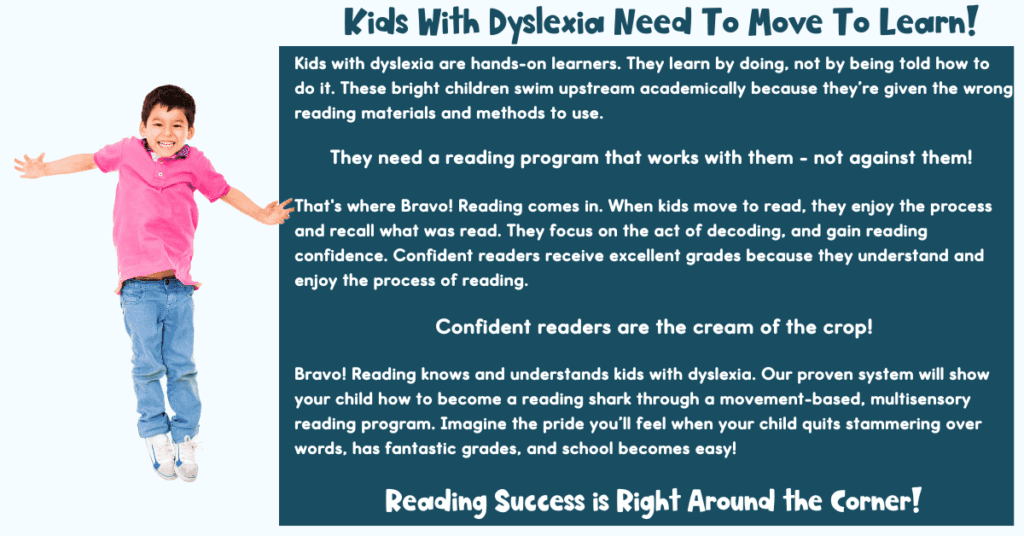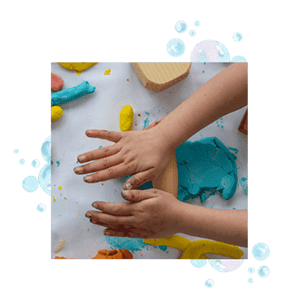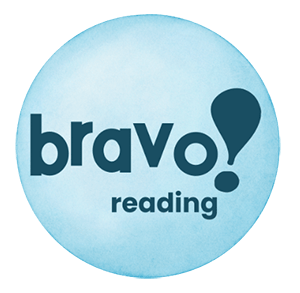The Orton-Gillingham Approach: Where Old Meets New!
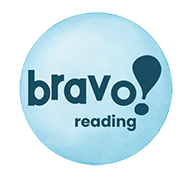
The Orton-Gillingham approach is a time-tested, multisensory method of helping kids with dyslexia. It was designed to teach reading, writing, and spelling to individuals with dyslexia and other language-based learning differences. This approach to treating dyslexia is rooted in the principles of structured, explicit, and sequential instruction.

In addition, the Orton-Gillingham approach tailors lessons to meet each learner’s unique needs. By integrating visual, auditory, and kinesthetic learning techniques, Orton-Gillingham helps children with dyslexia. Additionally, the approach builds strong foundational skills so kids can gain confidence in their abilities.
Join us as at Bravo! Reading as we explore the transforming power of the Orton-Gillingham approach. It’s a beacon of hope for those striving to overcome literacy challenges!
Even better, all Bravo! Reading materials are designed using the Orton-Gillingham approach. Only we’ve added more to make every activity your child engages in even better! Because we’ve learned a lot about kids with dyslexia since the 1930’s!
For instance, it’s common for kids with dyslexia to move a tile, write in sand, or mold letters and words out of clay to incorporate Orton-Gillinham techniques. But Bravo! Reading has improved on this by ensuring that kids use large motor movements instead. This leads to better retention of learning!
The Orton-Gillingham Approach: Turn Your Child Into A Reading Shark Now!
The Orton-Gillingham approach to teaching reading and decoding skills uses a structured, sequential, and prescriptive method in a multi-sensory fashion.

Presenting information in a multi-sensory way simply means using as many senses as possible. This usually means that hearing, seeing, and touching are prioritized.
At Bravo! Reading, we know that kids with dyslexia learn differently than other kids. This doesn’t mean there is something wrong with them. It just means they need different ways to learn. Most kids who have dyslexia are hands-on or tactile learners. This means they need to not only touch to learn – they need to “do” to learn.
Because of this, Bravo! takes the Orton-Gillingham approach and puts it on steroids. We make sure kids with dyslexia master important phonemic awareness skills through gross motor and cross-lateral movements. This is what gels with the dyslexic reader…it’s the language they can understand!
Instead of moving tiles with the fingers, which is a fine motor movement skill, we have kids use dot dabbers or bingo markers to get the whole upper body involved in learning. This gross motor movement is what works for the dyslexic reader! This is the Orton-Gillingham approach…and way more!
The Little Known Technique That Enhances The Orton-Gillingham Approach
To learn letter sounds and set in tricky concepts like double vowels, kids using Bravo! Reading’s materials dive right into the Orton-Gillingham approach by using dot dabbers with large motor movement.
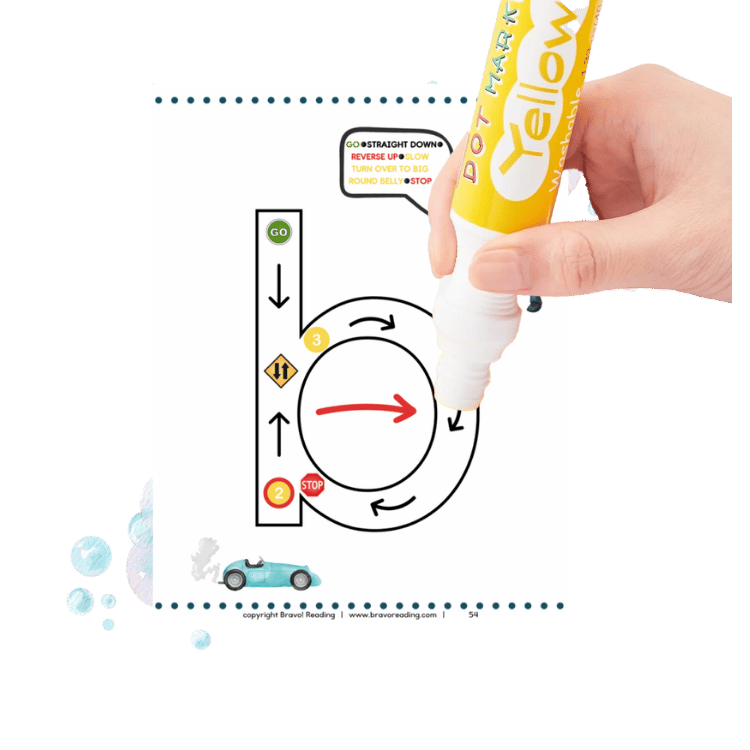
Only there’s more! The Bravo! way adds a brain-based learning component by using cross lateral movements. This simply means crossing the imaginary vertical midline of the body. These movements also help build new neural pathways in the brain.
Since spelling and reading are especially troublesome to students with dyslexia, an Orton-Gillingham approach is especially helpful, not only for kids with dyslexia, but any child with reading problems. Even better, research tells us that kids with dyslexia do best with an Orton-Gillingham approach to reading and decoding words.
Find Out How The Orton-Gillingham Approach Began
The Orton-Gillingham approach comes from its founders, Samuel T. Orton and Anna Gillingham. Samuel was a neuropsychiatrist and pathologist, living from 1879 to 1948. He was a pioneer on reading failure and related language processing difficulties as well as remediations for them.
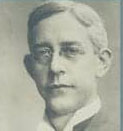
Samuel Orton is known to have identified the syndrome of dyslexia as an educational problem in as early as 1925. He worked with adult patients suffering from brain injuries and damage. Consequently, he applied what he learned from these patients to children with intact brain function but who experienced language learning disabilities. Later, Samuel coined the term dyslexia to describe them.
Anna Gillingham was an educator and psychologist who had a large mastery of language. She lived from 1878–1963, compiling and publishing instructional materials.
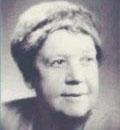
Gillingham wrote “The Gillingham Manual: Remedial Training for Children with Specific Disability in Reading, Spelling and Penmanship” with Bessie Stillman in 1935.
Additionally, Gillingham and Stillman pioneered a “sequential, alphabetic-phonetic multisensory program”. The program removed the need for students to memorize all words in the English language. In addition, it combined multisensory methods with teaching phonics, fluency, syntax, and morphology.
These materials provided the foundation for student instruction and teacher training. This has become the Orton-Gillingham Approach. This approach promotes learning sessions that are action oriented. Also, the sessions use a multisensory format using auditory, visual, and kinesthetic elements. Each element reinforces the other.
Three Distinct Areas Drive in Skills
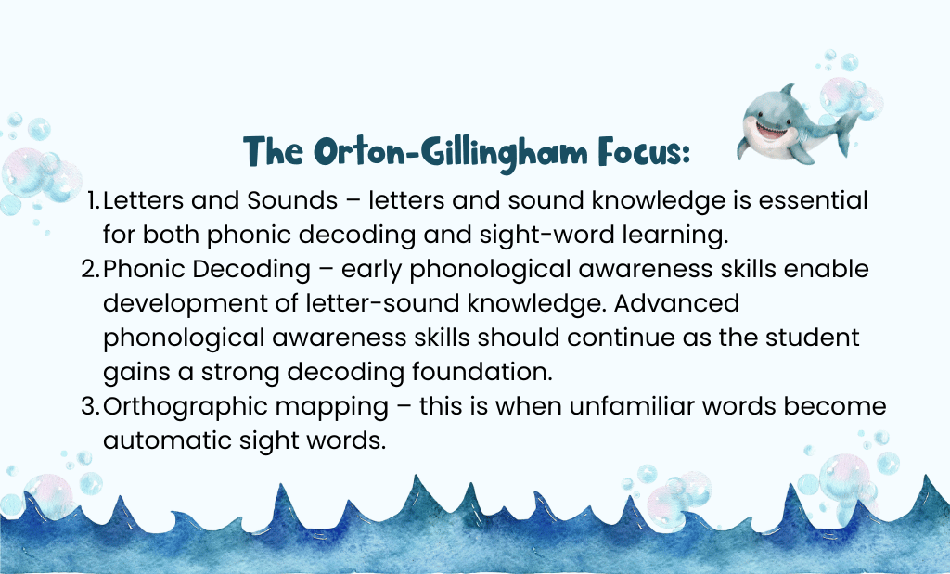

Orton-Gillingham Approach Focus 1:

To start, it’s important to understand that letters and sounds are the true backbone to any decoding program. Before a child can read, there must be a firm, automatic knowledge of letter sounds, including both long and short vowel sounds. All too often, kids with dyslexia bypass or fail to completely master this stage of reading development.
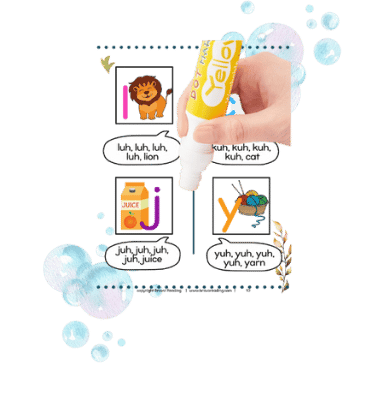
They slip through the cracks. Then, as more difficult material is expected of them, they fall apart. They end up guessing at words, desperately attempting ineffective strategies to decode like memorizing words or engaging in trial and error reading.
These strategies (or lack of them) put the dyslexic reader at a significant disadvantage because there are no firm decoding strategies in place for decoding (sounding out) unfamiliar words.
An Orton-Gillingham approach corrects this problem by ensuring letter sounds are learned in this multi-sensory fashion before taking dyslexic kids to the next level of reading. Bravo! takes it a step further with gross-motor movement and brain-based learning! This is the magic formula for the dyslexic reader!

Orton-Gillingham Approach Focus 2

Next, you need to know that phonic decoding is the ability to identify unfamiliar words and sound them out. It’s important that kids with dyslexia have this strategy to decode new words they come across to keep them from forming bad habits like guessing at words or memorizing words.
Orton-Gillingham research tells us that if kids with dyslexia are familiar with the forty-four phonemic units – the small units of sound that make up our language – then they will have a better chance at decoding. Examples of these phonemic units are “up”, “ib”, “en”, “ap”, and “og”.
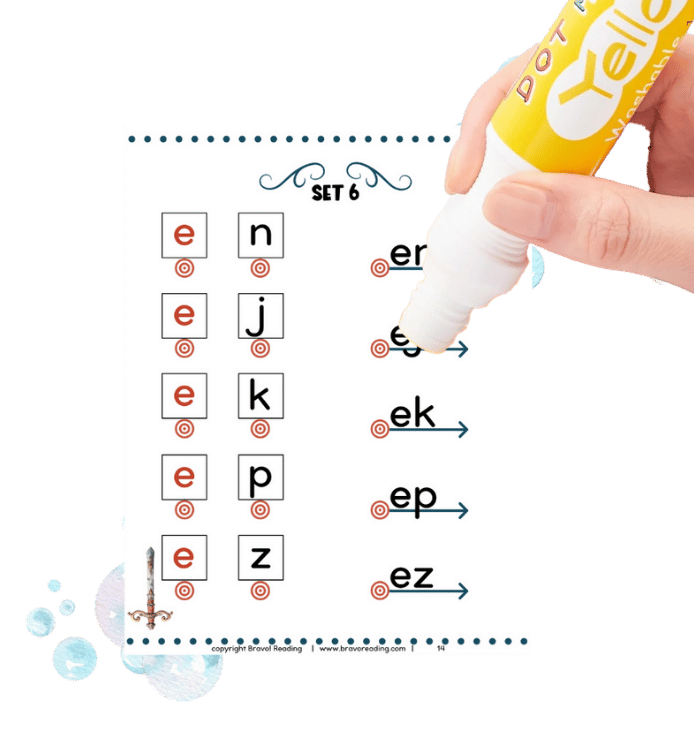
Once a child with dyslexia is comfortable and familiar with these basic sound units, then they can be built upon. At Bravo! we know about the hierarchy of reading and let readers build and explore these units one step at a time. We also ensure that each decoding unit is truly mastered before moving on to the next by our Bravo! Checklists.
These are quick, easy evaluations at the end of each level. Readers don’t move up to the next level until all phonemes are mastered.

Orton-Gillinham Approach Focus 3

Finally, the last focus of the Orton-Gillingham approach is orthographic mapping. This is a mouthful but really quite simple. It’s when automaticity or basic word recognition sets in.
Automaticity means that an action becomes automatic; we don’t have to put conscious effort into it. It happens naturally. Decoding should happen with automaticity, or there is a lag, which affects both reading comprehension and fluency in a negative way. Word recognition is important, as it keeps readers from having to sound out words letter by letter each time the word is seen.
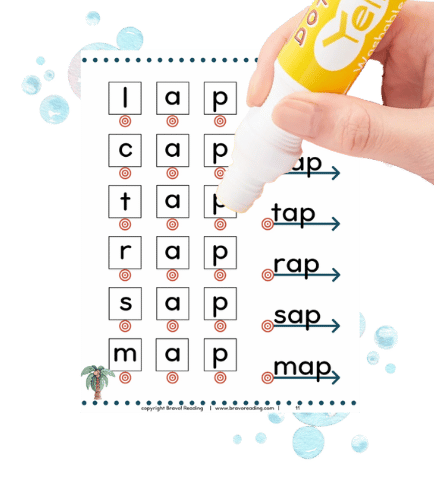
Also, without automaticity, it’s too easy for the reader to engage in those poor reading habits that get in the way of successfully sounding out a new word.
One of the worst bad habits kids with poor reading skills engage in is memorization of words. This is different than orthographic mapping in that the attempts at memorization are random and not based on first decoding the word and using it until it becomes an easily recognized word.
In addition, although the Orton-Gillingham Approach is primarily geared toward children with dyslexia, it can work for any reader.
Developed in the 1930’s, the Orton-Gillingham Approach has stood the test of time. But it only makes sense to take current brain-based learning research and modern gross motor skills knowledge, adding to the basic methods originally used so long ago.

Help Your Child Soar to New Reading Heights!
Reading and learning programs that implement the Orton-Gillingham approach understand the need for a multisensory approach to learning. Reading skills are especially dependent on this multisensory approach because children with dyslexia struggle to read.

It only makes sense to teach kids with dyslexia in a way that works for them – not other kids. Have you ever noticed how kids with dyslexia love science? That’s because science usually involves (or should involve) hands-on experiments.
Kids with dyslexia need to move to learn. They need to “do” something for it to stick. That’s why traditional reading programs miss the mark for kids with dyslexia. The programs usually rely on teaching through telling and showing.
Bravo! understands this mistake and makes sure that Bravo! kids aren’t exposed to it. Consequently, we use not only the Orton-Gillingham based approach, but we include large motor movement. In addition, we include brain-based learning as icing on the cake. This trio is the magic bullet for kids with dyslexia!
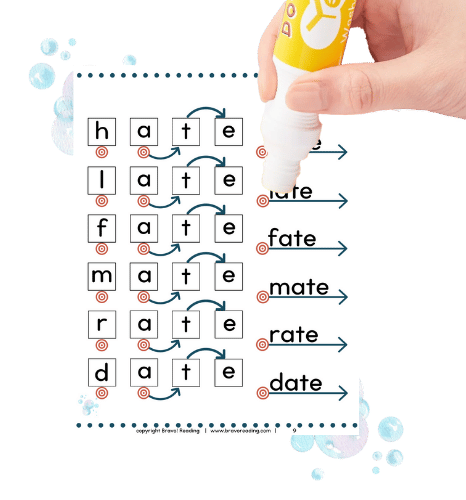
The Bravo! Reading Program and its expansion packs have been used with a 98% success rate in the Harp Learning Institute learning centers in Northern California for over twenty years. Kids adore using dot dabbers to learn decoding skills while crossing the midline of their bodies. All of the Bravo! decoding and reading programs are based on the Orton-Gillingham Approach!
Subsequently, kids with dyslexia delight in fun to use auditory and visual cues like the Silent “E” Slide and the Silent “E” Shuffle.
These multisensory actions keep dyslexic readers happy, focused, and on task. While they’re having a blast, they have no idea they are setting in important decoding skills.
And everyone knows an on-task learner is one who learns more. Time on task is like gold.
Why Kids with Dyslexia Love To Pound Letter Sounds!
Bravo! Reading adds to the Orton-Gillingham approach by ensuring large motor movements are used. This is in the form of using the hand, arm and shoulder while using a dot dabber and pounding out sounds.

In addition, while using Bravo! materials, your child will use visual and auditory cues along with brain-based learning to set in crucial phonemic awareness skills.
Also, to drive in learning for kids with dyslexia, phonemic awareness is part of each decoding and reading program. It’s important for kids with dyslexia to have strong phonemic awareness. Even better, the use of phonemes is part of the Orton-Gillingham approach.
There are forty-four small units of sound called phonemes in the English language. Examples of these basic phonemes are “ix”, “ab”, “ed”, “op”, and “ug”. By adding letter sounds and syllables to these basic units of sound, we build words.
When kids with dyslexia are taught to use these basic phonemic units of sound with large motor movements (dot dabbers) and slowly build up to multi-syllable words, reading skills stick! From there, they learn how to decode words with automaticity, which leads to stronger reading fluency and comprehension skills.
The Bravo! Way: An Orton-Gillingham Approach On Steroids
Bravo! Reading builds on the Orton-Gillingham Approach by using not only the 44 basic phonemes of the English language but adds to the basic structure of these phonemes one syllable at at time. The reading house is built one logical brick at a time.
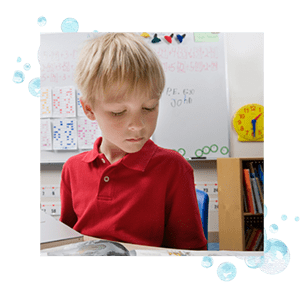
The Bravo! Way continues using the Orton-Gillingham Approach, large motor movement, and brain-based learning.
The following decoding skills are focused on:
- Variants – words and word spellings that don’t fit English language rules
- Double vowels – vowel combinations that come together making a new and unique sound
- Blends and digraphs – two consonants that come together to make one new and unique sound
- Focusing on decoding two letters together before forcing a student to read three or more
- Silent e – giving students a sure way to “see” the silent “e” at the end of words to make the vowel sound long
The Widespread Impact of Poor Reading Skills
Next, the Orton-Gillingham approach reveals how reading problems affect large populations of students. Learning to read, write, and spell isn’t natural or easy for these kids. For instance, if you have a child with dyslexia or a student who is failing to read, you need to veer away from mainstream reading programs if you want results. Using materials based on the Orton-Gillingham approach is a first step in getting results!

For example, in 2018, only about one-third of the American population fourth grade student population demonstrated reading proficiency. The proportion of struggling readers is far higher in minority and poor areas.
Subsequently, proper instruction is critical for these kids to reach reading success! Yet most are still made to endure antiquated methodologies in mainstream classrooms where reading instruction is aimed at kids without reading issues.
In addition, the Orton-Gillingham approach to reading can make the difference for a child who struggles to read, especially a child with dyslexia. Early intervention also helps!
An Orton-Gillingham Approach to Decoding Makes Kids With Dyslexia Happy!
Additionally, like any learning issue, the sooner poor decoding skills are diagnosed, the easier it is to put a plan of action in place to help the dyslexic child succeed. If kids with dyslexia don’t receive early intervention, they develop bad reading habits, and it becomes difficult to replace them with smart decoding strategies. If these children were exposed to an Orton-Gillingham Approach from the start, bad reading and decoding habits most likely wouldn’t have cropped up.
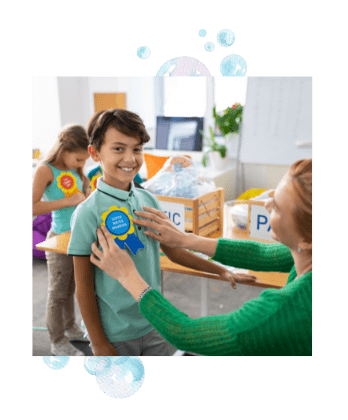
Also, kids develop a poor self-esteem when they fall behind in reading. Reading transfers to every subject in school – even math these days. When reading skills are below grade level, its difficult to earn high marks in school. The failure chain starts and unless something is done about it, the child’s self-image suffers.
Furthermore, an Orton-Gillingham Approach to decoding provides a unique and refreshing way to meet the needs of the dyslexic reader. And it only makes sense that if your child has dyslexia that a different approach is needed.
The reading program that worked for you or your parents most likely won’t work for your child!
